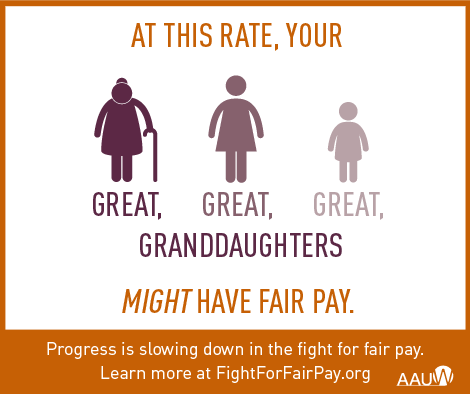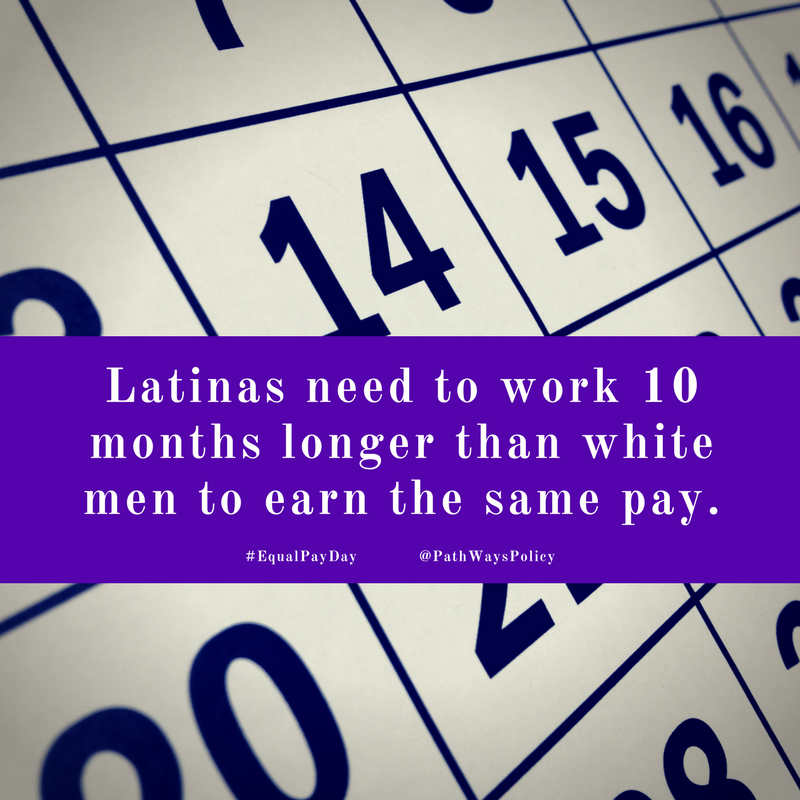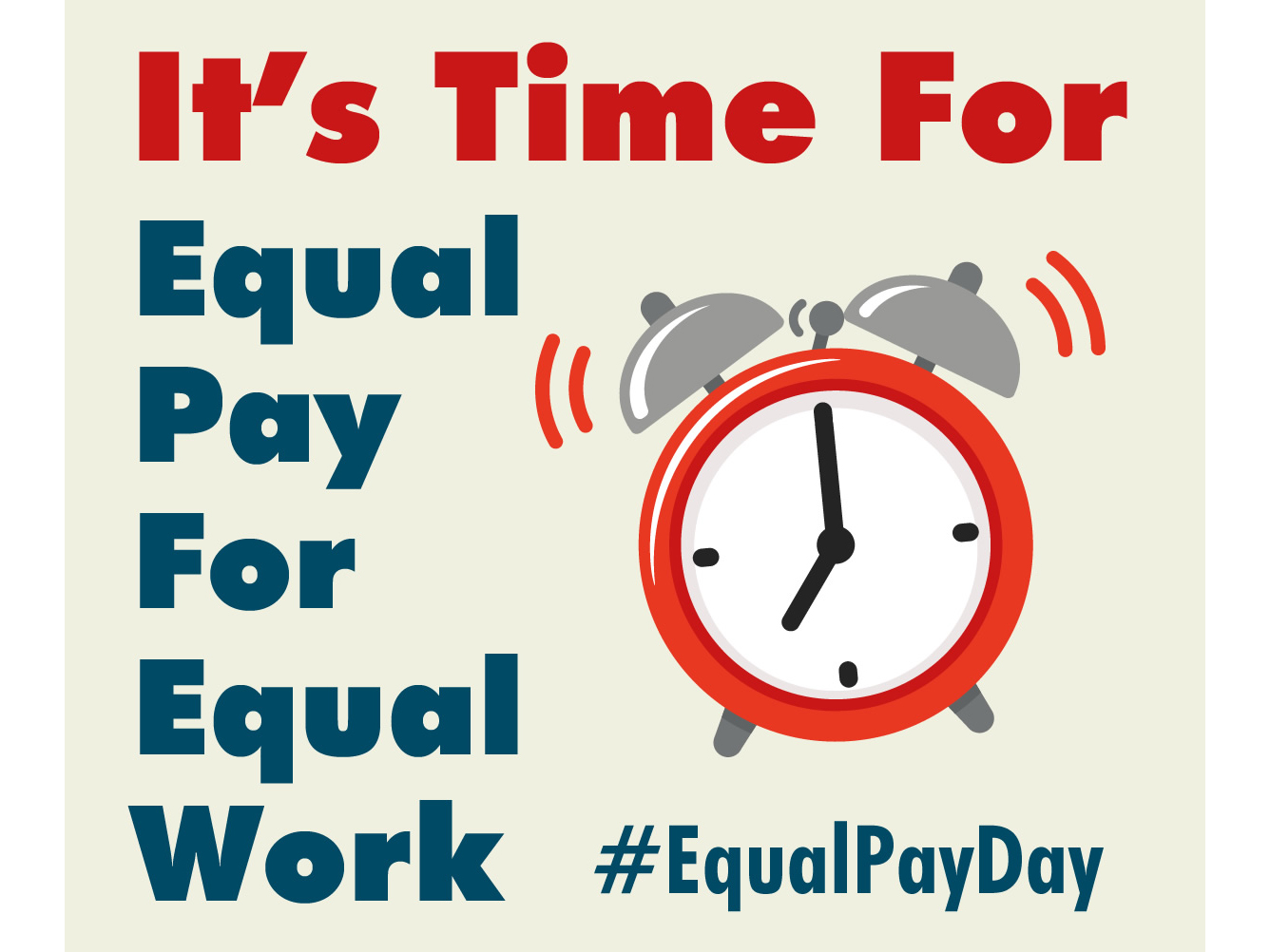
DBP
April 10 is Equal Pay Day in the United States. This date symbolizes how far into the year women must work to earn what men on average earned the previous year. Women earn 80 percent on average of what men earn, while Latina/Hispanic women earn 54 percent, Native American women earn 57 percent, black women earn 63 percent, white women earn 79 percent and Asian American women earn 85 percent of men.
But pay equity is about more than just leveling salaries–and it’s also not just a U.S. issue. Pay equity means creating equal opportunities for high-paying positions, evaluating areas of bias that may prohibit hiring and promotions, and factoring in work accommodations that could slow pay progress, such as flexible work arrangements and time off for family leave.
It’s very important. A recent study by PayScale, Inc. found employees who rate their employers poorly on pay transparency are 80 percent more likely to say they want to leave in the next six months than those who give higher marks.
In this report, we will examine the progress being made in the United States, globally and the best practices and how to’s successful companies are using to reach pay equity.

PathwaysPA
United States
In 2016, more than 100 companies signed on to the White House Equal Pay Pledge, launched at the first United State of Women Summit in June of that year. These companies represented a variety of industries, including companies on the National Association for Female Executives (NAFE) Top 70 Companies for Executive Women — Accenture, AT&T, A.T. Kearney, Colgate-Palmolive Co., Deloitte, Ernst & Young LLP, Gap Inc., General Motors, IBM, Johnson &Johnson, L’Oreal USA and Target.
These employers agreed to share best practices (even in the same industries) to develop better hiring, promotion and pay policies. They promised to conduct annual companywide pay analyses to determine gender gaps, review hiring and promotion polices for unconscious bias and structural barriers, and embed equal-pay efforts across their organizations.
The Obama administration also had proposed a rule that would have forced all employers with at least 100 employees to disclose data on wages to reduce gender pay discrepancies. This would have been similar to rules introduced in several other countries.
In June 2017, the Trump administration eliminated this rule (which was still pending), saying the data would be too voluminous to collect. The Trump administration also removed the Equal Pay Pledge from the White House website.
But that hasn’t stopped most of these companies from aggressively pursuing equal pay policies and best practices. “We take great pride in our transparency and our efforts for pay equity. The more we can talk about it, the more we can do something about it,” says Angela Guy, head of Diversity & Inclusion, L’Oreal USA.
In the United States, these companies are not alone in their efforts. An increasing number of states and cities are prohibiting employers from asking applicants about their salary histories in an effort to alleviate historic gender pay discrepancies.
These states and cities so far have enacted these policies: California, Delaware, Massachusetts, New Jersey, New York state, Oregon, New Orleans, New York City, Philadelphia, Pittsburgh and San Francisco. In response, so far this year, according to Bloomberg BNA, seven companies with headquarters in these states announced they are banning the salary question. They are:
Amazon (Seattle)
American Express (New York City)
Bank of America (Charlotte, NC)
Cisco Systems (San Jose, CA)
Facebook (Menlo Park, CA)
Google (Mountain View, CA)
Wells Fargo (San Francisco, CA)
Global Landscape
The World Economic Forum has documented pay disparities in 144 countries. Globally, the average pay for women in 2017 was $12,000, compared with $21,000 for men. And the gap has worsened in recent years. The forum estimates at the current rate, it will take 217 years to close the global economic gap.
There is global progress in many countries. Two thirds of Organization for Economic Cooperation and Development countries have introduced new policies on pay equality since 2013, while the UK, Australia, Japan, Germany and Sweden are among an increasing number of countries that require some employers to publish calculations every year showing the gender pay gap.
In the United Kingdom, for example, organizations with 250 or more employees are required to publish data on the pay gap between female and male employees. The government, as of earlier this year, had published data on more than 500 companies that had responded.
On Jan. 1, 2018, Iceland became the first country to pass a law that has major impact on pay inequity. Under the new law, companies with more than 25 employees must submit a certificate showing pay equity or they face significant fines. The equal pay standard assesses a company’s pay policies and classification of jobs according to equal value and wage analysis on the basis of the classification.
A study by Expert Market in October 2017 showed that there is a 16 percent wage gap between men and women in the Netherlands. Effectively, this means that women in the Netherlands work unpaid for almost two months per year. In March 2018, the Dutch government called for a proposal calling for companies with more than 50 employees to offer equal pay for equal work. A certification system will be implemented in which companies must publish data every three years or they will be fined.
Best Practices: SAP, L’Oreal, Accenture, Starbucks
Companies must be knowledgeable about and comply with local laws in countries, states and municipalities. Beyond that, we interviewed leaders at SAP, L’Oreal and Accenture, and included a recent pay-equity announcement from Starbucks to compile best practices and how to’s.
Senior Leadership Must Determine Commitment: About five years ago, L’Oréal’s global leadership drew a line in the sand and said equity would be at the forefront of their efforts. There were two levels to this — ensuring equal pay and ensuring there was a succession planning effort strong enough to bring in and develop women leadership.
At Accenture, top global corporate leadership and the board of directors discussed the stated goal of reaching gender equity in the U.S. and globally and decided to be transparent about it through public statements. “We believe transparency builds trust. When you are aspiring to achieve such an important business and talent objective, it is really important the entire organization understands,” says Ellyn Shook, Chief Leadership and Human Resources Officer.
Conduct Regular Pay Audits and Use Experts: Many companies use legal teams and/or certification, such as EDGE, to ensure their pay equity analyses are by the books. At SAP, for example a law firm was used for a 2016 U.S. analysis of the approximately 20,000 employees. “We found that 99 percent of employees assessed in statistically relevant categories were paid equally by gender compensation,” says Atle Erlingsson, Head of Communications, SAP Americas and Asia Pacific Japan. “Going through a pay-equity analysis is uncomfortable. You are making yourself vulnerable and potentially exposing yourself to something that may not live up to the standards of the organization. We are committed to peeling back the layers. It’s not about feeling comfortable, it’s about doing what’s right,” he says.
Sometimes, however, a company needs more frequent audits. In the U.S., because L’Oreal has had a series of acquisitions that constantly change the pay landscape, internal pay audits have been conducted at least twice a year across and within job levels.
Clearly State Results, Especially to Those Impacted: Jewell Parkinson, Head of HR for SAP Americas and Asia Pacific Japan, notes: “We communicated the results throughout our organization to those identified as the 1 percent potentially not being paid equitably, as well as their managers. Our goal is to make this a more sustainable part of our culture” and that includes being transparent.
Starbucks recently publicly announced that it has reached 100 percent pay equity for partners of all genders and races performing similar work across the U.S. The company now says it is working to close the gender gap worldwide.
Define Performance Metrics: “Performance is the biggest variable. If two people are meeting the expectations of the role and have been at the company the same time, they should be paid the same thing,” Guy says.
Guy recommends having clear metrics on what defines good performance and ensuring, through unconscious bias training, that prejudices don’t influence what defines good performance. Her company also examines factors such as time women took for maternity leave and how it impacted performance and pay.
Shook emphasizes that companies new to pay equity “must make sure they really understand their data and have a rigorous and transparent methodology. Otherwise, you can explain a lot of these issues and disparities away. Develop a methodology that you’re comfortable with that gets you to the outcome.”
At SAP in the U.S., annual reviews are examined for gender inequities as well as looking mid-cycle. And salary bands are assessed when a promotion occurs, Parkinson says. Managers are encouraged to make more informed decisions about promotions and where the individual should be within the band.
Accenture has taken a different route, one some other companies are following, by eliminating formal performance reviews. Globally, the company eliminated annual forced rankings (1-5 scale) in 2015. Instead, employees get on-demand evaluations whenever they want and when their managers feel needed.
To ensure pay equity, they do a pay equity analysis of all roles before Dec. 1, the day all pay changes are administered across the organization. Before the information is uploaded, they do another audit to ensure no pay inequities.
“We were a little nervous because conventional wisdom said if you take away forced rankings, you won’t get differentiation. We have found the results are more accurate,” Shook says.
Look at Impact of Benefits: SAP has been evaluating its part-time leave policy and how that impacts compensation. As a result, the policy in the U.S. is being enhanced so a person can now work 50 percent and still receive full benefits vs. a previous 80 percent requirement.
Review Offer Process: In accordance with the new state and city laws, companies (even if they aren’t headquartered in those places), should ban salary history questions. Sara Bowen, an attorney who leads Starbucks Inclusion, Diversity, Equity and Accessibility (IDEA) team, said in a press release: “One of the most important things to get right is starting pay. If a woman comes into a company low, she tends to stay low… Prior salary can be tainted and should not dictate how we pay our partners.” Starbucks advocates using aa tool such as a calculator to objectively determine target start pay ranges based on a candidate’s experience.
At SAP, the company examined its external and internal offer process and modified its prehiring approach so it is not asking candidates to validate prior or desired earnings. “It is much more of an opportunity to make sure when we are proposing an offer we are doing it on comparable skill sets and roles and not what an individual may or may not say they want. This makes for a better process overall… and makes these offers more gender neutral based on skills vs. personal one-on-one negotiations.”
Tips for ensuring diversity in succession planning:
Widen the net. Consider the top 10% of talent across every diversity dimension
Create targeted development plans to ensure diverse talent is receiving equal development opportunities
Consider sponsorship to increase visibility and increasing trust levels; the higher the level, the more important it is to build trusting relationships
Create opportunities to provide the relevant and right job experiences to get to the next level
Evaluate Succession Planning: For women to have pay equity, there need to be enough women in the leadership pipeline. At SAP, the company is evaluating the gender makeup of succession slates and promotion opportunities for women at the executive level and above. When they a gender deficit in a slate of internal candidates, they turn it into a priority for external hiring, Parkinson says.
Ensure an Inclusive Workplace: Accenture recently released its “Getting to Equal 2018” report, which finds that several factors contribute to narrowing gender and pay equity gap including: bold leadership setting diversity goals and ensuring more female representation at top levels; involvement across the organization in women’s networks (employee resource groups), a culture that trusts the individual to make decisions, such as no dress code.
Globally, Look at Each Country Differently But Have Global Standards: “We always looked at pay equity as a business. Each business unit has ability to adjust compensation. Having this focus lends on gender equity allowed us to step back and say employee A Vs. Employee B has an inequity. We look at the differences — men vs. women, white vs. people of color, etc. and at the pay levels,” says Angela Guy, head of Diversity & Inclusion, L’Oreal USA.
Each global L’Oreal subsidiary reports on its own pay differentials and what it is doing to address them. The U.S. is at a 5 percent difference, largely because of those acquisitions, while France is at 3.5 percent and other global subsidiaries vary.
At Accenture, there is standard global methodology to assess pay parity and the company uses its diversity and inclusion initiative to ensure equity in hiring and advancing under-represented groups.
At SAP, pay equity and gender leadership policies are communicated and applied to different areas. For example, a pilot program in Germany on co-leadership, allowing two employees to work flexibly but still be able to experience leadership roles, is now being implemented in the U.S.
Collaborate With Other Companies: L’Oréal’s Guy says it’s crucial to “learn from others who go through it. At the end of the day, it’s about sustainability of the marketplace.”
Be Vigilant in Ensuring Managers Are On Board: In a large organization, as managers come and go, it is important to ensure that both unconscious bias and the continuous evaluation of pay inequities is ongoing.
SAP’s Parkinson notes that educating leaders around pay practices is crucial.” What are we trying to reward? What mechanisms are we using — base pay, variable pay, equity pay? All those mechanisms drive outcome, productivity and performance. We need to maintain and sustain a culture that is pay equitable as we move forward.”
As Starbucks’ Owens said, “The work is complex and requires constant vigilance and innovation. We’re fighting against centuries of systemic bias that we can’t solve alone. We must continue to break down the barriers that have created the current pay gap, and partner with others to drive the same change in their organizations so together we create a cultural shift.”
“Pay needs to be an important part of achieving equality. Keep pay front and center,” advises Shook.

